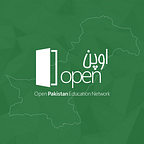Originally published on Thursday, February 10, 2005
Enter KOMaL v1.0
I was trying to develop an Adaptive Learning System back in 2000 and came up with an idea of Developing a GUIML (Graphic User Interface Markup Language), but the only issue was the development of a Runtime to parse and generate the GUI in real time. Luckily, Microsoft solved that problem (even though much later) by launching XAML (eXtensible Application Markup Language). I stumbled on SCORM (Sharable Content Object Reference Model) during that time too. There are a number of underlying problems with SCORM, something I would blog later.
KOMaL (Knowledge Object Modeling Language) is something I have been trying to develop for the past 2 years (but my schedule wouldn’t let me). Anyway, I finally came with the following small description for KOMaL which I would refine further as I discover new tools and technologies.
The Internet is an almost-limitless resource of Information which exists in the form of web pages, followed by images, pdf files etc. However, web pages provide the only means for hosting information, each one having a URL, and acessible only through a web browser which renders the HTML in the page to display the content. Looking up or searching for information on a particular topic involves knowing the exact URL or by using a search engine where searches can only be made for a keyword.
Currently, the global directory of domain names maintained by InterNIC has no means of identifying the type of content hosted at a particular domain name. In most cases, a user does not necessarily get to the exact information she requires since a search usually turns up thousands of results and it is impossible to look each one up. Since web pages are composed of textual information contained within markup, the only way the content of that page can be characterized is by making a search on the terms and keywords in it. Usually, the meta tag is used to explicitly add keywords to a web page so they may be picked up by a spider or web-crawler.
With the advent of computers decades ago, the word “data” was adopted and used in connection with the textual and numerical facts and figues used in electronic data processing. With the proliferation of Internet a little more than a decade ago, the word “Information Technology” with emphasis on “Information” became widely used. The focus now has shifted to the word “knowledge” which primarily refers to the Information that is of particular use to an individual or organization. True, vast information is available on the internet; however, the internet failed to become a source of knowledge i.e. the most relevant and meaningful information for an individual or enterprise. In order to allow information to be represented as knowledge, changes in the existing internet architecture or infrastructure is not a possible option. The need is to come up with a new architecture that can run parallel to the existing system, is sharable, and can enable a more thorough representation of knowledge and its search mechanisms.
Finally, I have also found a couple of energetic students at SSUET to undertake this project. Wish ’em all the best.
